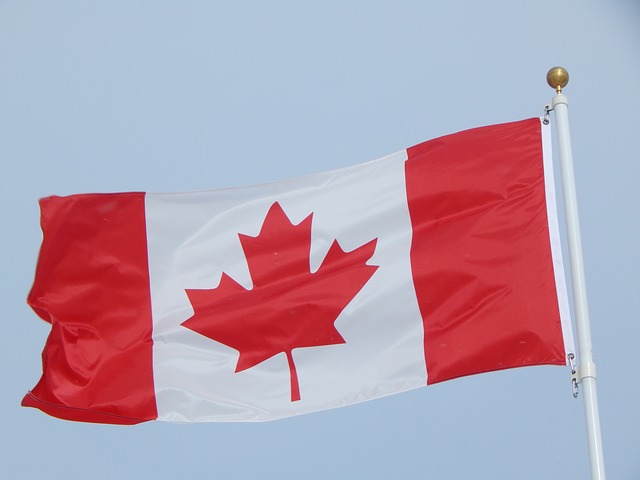
The Canadian government has removed a plaque from its inaugural Holocaust memorial after falling to mention antisemitism or the murder of six million Jewish people.
Canada’s Prime Minister, Justin Trudeau, inaugurated the National Holocaust Monument in Ottawa on September 27. In his speech, he did, however, reference antisemitism.
“Today we reaffirm our unshakeable commitment to fight anti-Semitism, racism, xenophobia, and discrimination in all its forms, and we pay tribute to those who experienced the worst of humanity,” he said.
Mélanie Joly, Canada’s Minister of Canadian Heritage, did highlight the murder of millions of Jewish men, women, and children, during the memorial inauguration.
Other explanatory panels in the memorial do reference the genocidal murder of Jewish communities, Canada’s discriminatory immigration policies, and the resistors of Nazi tyranny, according to the Canadian Jewish Press.
Therefore, to unveil a plaque that honours the “millions of men, women and children murdered during the Holocaust,” contradicts the above statements. At best an oversight, at worst, the choice of language echoes that of Donald Trump on Holocaust Memorial Day, which drew wide condemnation, as PM Trudeau did in 2016 when he did not mention Jewish people in his Holocaust Memorial Day speech.
At a deeper level, this error reflects a more uncomfortable part of Canada’s history, in a country that accepted a dismal number of Jewish refugees who fled Nazi persecution, state violence, and oppression.
Irving Abella wrote that the Canada of the 1920s and 1940s was a place where racist immigration laws gave preference to white communities, in a society where antisemitism and nativist chauvinism made Canada a hostile place for immigrants.
“The Jew was the pariah of Canadian society, demeaned, denounced and discriminated against,” he wrote.
Discrimination in the education system saw the creation of Jewish schools as early as 1913. Jewish students faced discrimination in both Catholic and Protestant-run institutions in the decades ahead.
By 1931, Toronto’s Jewish population totalled 7.2 per cent (45,305) of the population, with many immigrants arriving from Poland and Russia, their mother tongue being Yiddish. Within two years, however, Jewish communities were excluded from almost all forms of employment.
In August 1933, signs bearing swastikas and ‘Heil Hitler’ appeared on the beaches of Toronto. Police named the culprits as the Swastika Club, which was believed to have a membership exceeding 400 people.
In that same month, antisemitic youth unveiled a giant swastika banner during a junior baseball match, and their target was the predominantly Jewish team, the Harbord Playground. It turned into a six-hour melee of violence, as Nazi sympathisers and Jewish communities fought each other, following weeks of racial tension and normalised antisemitism.
In short, antisemitism was a way of life in Canada. From its institutions to the attitudes of it political elites and upper classes.
Canada placed increased restrictions on the entry of Jewish refugees in the 1930s. In 1931, the Canadian government accepted just 649 refugees and migrants, and by 1935, that figure rose to just 880.
The avowed antisemite Frederick Charles Blair oversaw Canadian immigration policy under the premiership of William Lyon Mackenzie King. He compared Jewish people fleeing into Canada as hogs at feeding time, and Blair would even boast of how his immigration reforms discriminated against Jewish applicants.
PM Mackenzie King faced internal political pressure throughout the 1930s but resisted calls to accept more Jewish refugees as Nazi state violence grew. His private diaries revealed his underlying antisemitic views. In one entry, written in 1938, Mackenzie King feared changing Canada’s immigration policy to accommodate more Jewish refugees would create ‘riots’. Nor did he believe that his Cabinet would not accept a shift in policy.
Canada was not alone in its indifference to Jewish suffering. In 1938, a conference setup in France to discuss the rising number of Jewish refugees fleeing Nazi violence saw no shift in the immigration policies of most of the 32 nations in attendance.
On May 13, 1939, the St. Louis departed from Nazi Germany with 907 Jewish refugees, who had their homes, possessions, and jobs taken away. Their destination was Cuba, as many had applied for US visas.
The journey was generating international press attention, as the rhetoric of the Cuban government grew increasingly antisemitic, as 40,000 turned up in Havana to attend an antisemitic rally.
Cuba then prevented the St. Louis from entering, as pleas to various South American countries went unanswered, a position also taken by the Roosevelt government in the United States.
Various Canadians petitioned the government to allow the ship to dock in Halifax, Nova Scotia, but the decision rested in the hands of Frederick Charles Blair, who argued that they failed to qualify for entry under immigration laws and that Canada had done ‘plenty’ to assist Jewish refugees.
The ship soon returned to Europe, where some refugees did settle in the UK, Belgium, France, and the Netherlands, as 254 did not survive the Holocaust.
Between 1933 and 1939, the Canadian government accepted just 4,000 of the 800,000 Jewish refugees fleeing Nazi tyranny. Other research suggests that between 1935 and 1945, Canada only accepted only 5,112 Jewish refugees.
The very idea of a permanent Holocaust memorial in Canada did not enter the public debate until 2007, and the former Conservative government of PM Stephen Harper did get a bill pushed through before the no-confidence vote of 2011.
Nor has Canada formally apologised for turning away the St. Louis.
PM Trudeau, has, however, formally apologised for Canada’s refusal to accept a shipload of Sikhs aboard the Komagata Maru in 1914 last year. In 1988, the then Prime Minister Benjamin Mulroney apologised for the internment of 22,000 Japanese Canadians during the Second World War.
No discussion of Canadian antisemitism, however, is complete, without reference to the very real and modern problem of antisemitic hate crime, as 1,728 antisemitic hate crimes were recorded across Canada in 2016, and a fifth of reports included Holocaust denial.
